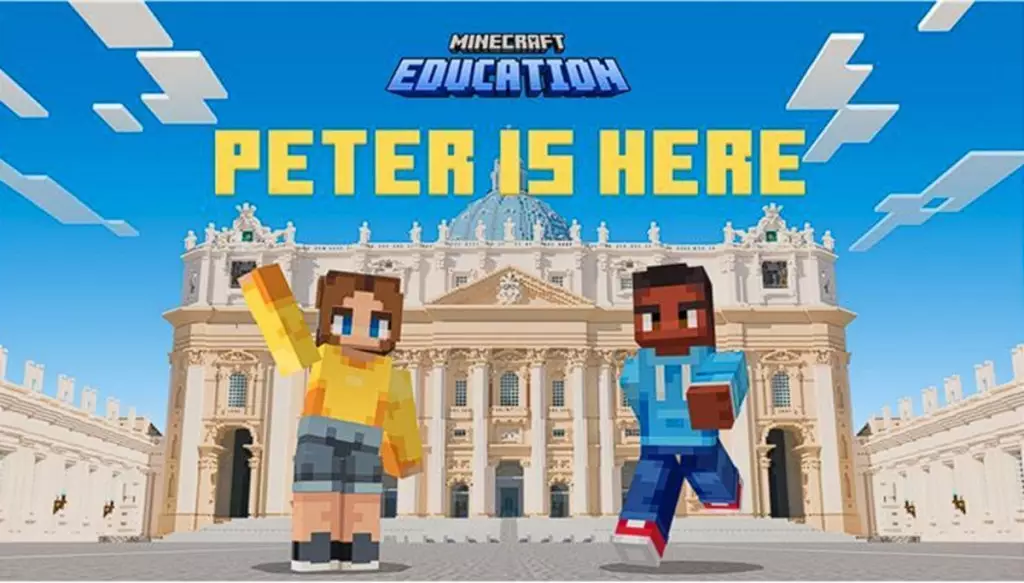St. Peter’s Basilica isn’t just an architectural wonder; it’s a powerful symbol of art and history that has influenced culture and religion for centuries. This monumental structure, located in Vatican City, has been meticulously designed by renowned artists and architects, and it houses some of the world’s oldest and most cherished art pieces. Yet, as with all historical structures, the pressures of time and environmental factors threaten its integrity.
With the advent of technology, especially artificial intelligence (AI), there has emerged a revolutionary opportunity to not only preserve such landmarks but also engage new generations in their significance. In a surprising collaboration, the Vatican, Microsoft, and Minecraft Education are participating in this cultural renaissance by creating a novel educational experience that seamlessly merges fun with learning.
Introducing “Peter is Here”: A Game-Changing Learning Experience
“Peter is Here: AI for Cultural Heritage” is an innovative educational initiative that allows students to step into the shoes of the Sanpietrini, the caretakers responsible for maintaining St. Peter’s Basilica. Through an engaging gameplay experience set within the iconic world of Minecraft, learners can explore the basilica’s grandeur while actively participating in its preservation.
This game is not merely a diversion; it is an impressive blend of history, technology, and problem-solving. It highlights how modern tools can assist in the maintenance of crucial cultural landmarks, where students are not just passive observers but active contributors to conservation efforts. By utilizing simulated AI tools and historical artifacts, players can dive deep into the past and understand the methodologies behind preservation.
Restoration Mode: Hands-On Cultural Preservation
The game’s first mode, “Restoration Mode,” invites students to engage directly with the Basilica’s repairs in an immersive learning environment. As future custodians of history, they are entrusted with critical restoration tasks that span various epochs, showcasing the evolution of architecture and culture over time.
Players confront challenges like repairing the Vatican Obelisk and reinforcing Bernini’s iconic Baldachin, all while gaining insights into the era each construction embodies. By employing simulated AI technologies, such as block scanners and damage assessment tools, students can make real-time decisions that affect the Basilica’s appearance within the game. The immediacy of their actions reinforces the idea that preservation is an ongoing effort requiring conscientious engagement—both in the game and in real life.
Additionally, the game offers historical context, allowing players to appreciate the architectural styles and construction techniques unique to each era they explore. This contextualized learning enhances their understanding, transforming them from mere participants into vital contributors to the narrative of cultural heritage.
Exploration Mode: Unveiling Hidden Histories
Upon completing restoration tasks, eager players can transition into “Exploration Mode,” where they delve deeper into the Basilica’s enchanting halls. Armed with tools like the Smart Compass, students engage with history by exploring hidden areas, interacting with intriguing collectibles, and conversing with historical figures who narrate the Basilica’s storied past.
This immersive experience instills a sense of inquiry and adventure. As students gather artifacts and engage with non-playable characters (NPCs), they unlock even more secrets, reinforcing the notion that history is an interactive journey rather than a linear path. This transformation empowers students to emerge not just as restorers, but as active historians who are passionate about cultural legacy.
Integrating Technology and Education
The educational implications of “Peter is Here” extend far beyond a simple gaming experience. Educators can access supplemental materials that encompass lesson plans and workbooks, designed to enhance classroom discussions about history, art, and technology. This integration facilitates a multifaceted approach to learning—bringing subjects like social studies, technology, and the arts into a cohesive educational framework.
Moreover, by exploring current digital imaging and AI techniques, students gain a forward-looking perspective on heritage preservation. This connection is crucial, as it bridges time-honored practices with innovative methods to safeguard our shared cultural history.
Incorporating AI into the educational sphere empowers students with valuable skills that are increasingly relevant in a technology-driven world. As they immerse themselves in the restoration and exploration of a historical site, learners gain insights into the importance of using modern tools for community and cultural betterment.
Crowning Achievements and Future Possibilities
After completing the various challenges of “Peter is Here,” students are celebrated for their achievements with official certificates, marking their contributions as “honorary preservers of cultural heritage.” This accolade serves as a tangible connection between their in-game experience and real-world implications, reinforcing the importance of skill-building for future generations.
By empowering students to take an active role in cultural preservation, “Peter is Here” not only educates them about a venerable landmark but also instills a responsibility toward maintaining our global heritage. This revolutionary initiative demonstrates that with every block restored, a richer understanding of the past unfolds—forever altering the way we approach architectural preservation in the modern world.

